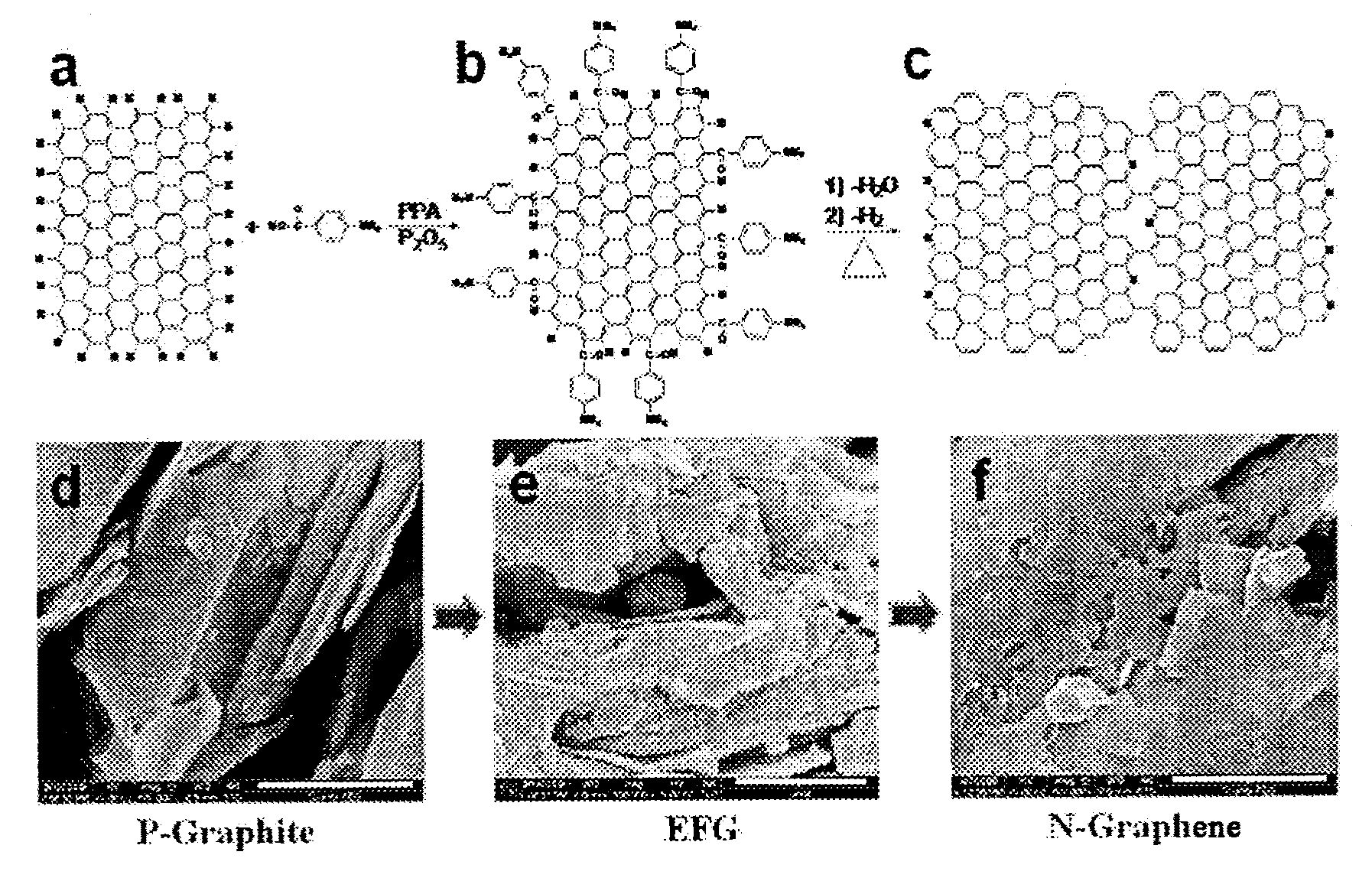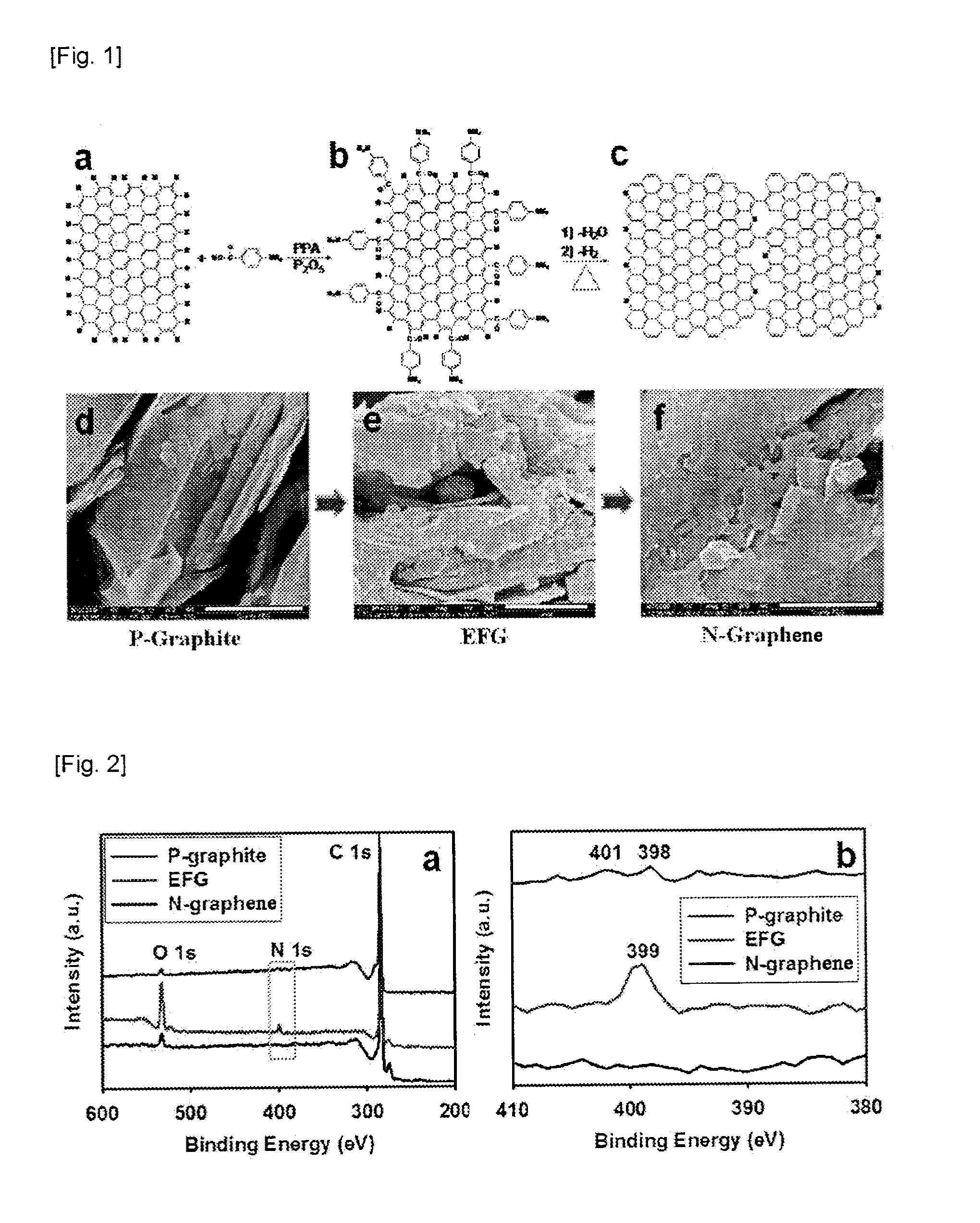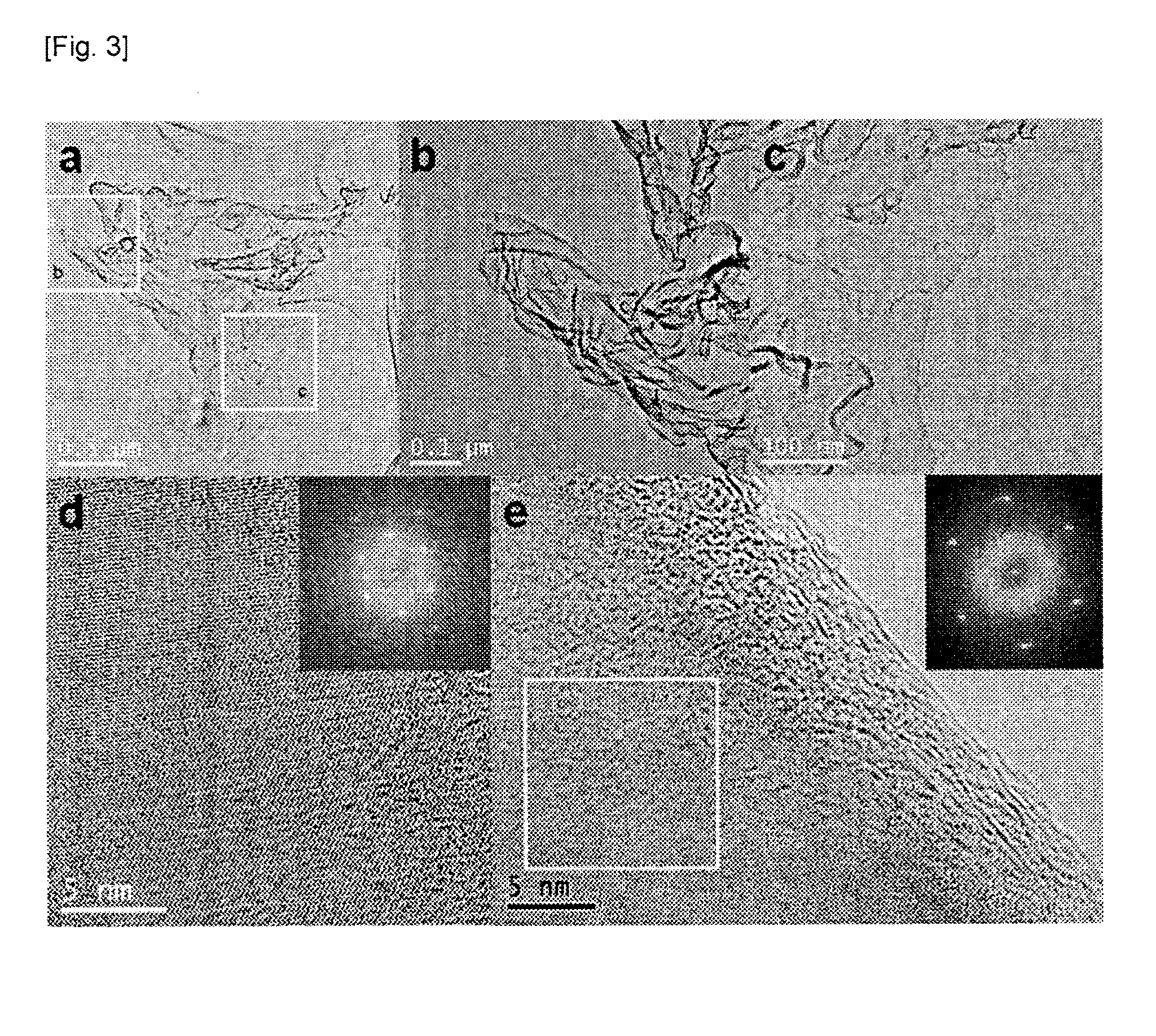Method of preparing nitrogen-doped graphene and nitrogen-doped graphene prepared thereby
a nitrogen-doped graphene and nitrogen-doped graphene technology, which is applied in the field of nitrogen-doped graphene and nitrogen-doped graphene prepared thereby, can solve the problems of reduced graphene-inherent excellent physical and electric properties, low final yield, and low yield of graphene, etc., to achieve high yield, high purity, and simple process.
- Summary
- Abstract
- Description
- Claims
- Application Information
AI Technical Summary
Benefits of technology
Problems solved by technology
Method used
Image
Examples
example 1-1
Preparation of Organic Material-Grafted Graphene
[0073]0.5 g of graphite and 0.5 g of 4-amino benzoic acid were put into 25 g of reaction medium containing 20 g of polyphosphoric acid (PPA), polyphosphoric acid (115% H3PO4 basis) purchased from Sigma Aldrich and 5 g of phosphorus pentoxide (P2O5) and stirred under dry nitrogen purge at 130° C. for 72 hours to react the graphite with 4-aminobenzoic acid.
[0074]The initially black mixture became lighter and viscous. At the end of the reaction, the color of the mixture turned tanned brown. After the termination of reaction, the resultant product was treated with water for three days, and then with methanol for three days using Soxhlet to remove polyphosphoric acid, phosphorus pentoxide and unreacted reactants such as unreacted 4-aminobenzoic acid. Thereafter, the resultant remainder was lyophilized under reduced pressure to obtain 0.74 g (79% yield) of tanned brown powder.
[0075]FIGS. 1a and 1b show a reaction of preparing organic materia...
example 1-2
Preparation of N-Graphene
[0077]The organic material-grafted graphene (EFG) obtained in the Example 1-1 was heat treated using an electric furnace under nitrogen atmosphere at 900° C. for 2 hours to obtain N-graphene
[0078]FIGS. 1b and 1c show a preparation reaction of such N-graphene wherein by heat treating organic material-grafted graphene (EFG), unnecessary organic material portions are removed and nitrogen is introduced into the structure of grapheme.
[0079]FIG. 1f is a magnified image of N-graphene prepared by such reaction using the field emission scanning electron microscopy (scale bar is 1 μm).
experimental example 1
Elemental Analysis and XPS
[0080]For graphite used in the example 1-1, the organic material-grafted graphene obtained in the example 1-1 and N-graphene obtained in the example 1-2, elemental analysis was conducted with Thermo Scientific Flash 2000 and X-ray photoelectron spectroscopy (XPS) was conducted on Thermo Fisher K-alpha. The results are shown in the following Table 1 and FIG. 2.
TABLE 1Elemental AnalysisXPSSampleC (%)H (%)N (%)O (%)C (%)N (%)O (%)P-graphiteCalcd100.00.000.000.00100.00.000.00Found97.64BDL*BDL* 0.00585.05BDL*14.92EFGCalcd89.901.703.934.4889.904.483.93Found86.411.553.816.0274.816.6518.54N-grapheneCalcd100.00.000.000.00100.00.000.00Found98.32BDL*0.12BDL*95.161.731.78*BDL = Below detection limit.
[0081]As shown in Table 1, XPS measurement values show surface composition of carbon, oxygen and nitrogen and clearly represent the presence of nitrogen in N-graphene obtained by the heat treatment under nitrogen atmosphere at 900° C. for 2 hours. The elemental analysis rep...
PUM
 Login to View More
Login to View More Abstract
Description
Claims
Application Information
 Login to View More
Login to View More - R&D
- Intellectual Property
- Life Sciences
- Materials
- Tech Scout
- Unparalleled Data Quality
- Higher Quality Content
- 60% Fewer Hallucinations
Browse by: Latest US Patents, China's latest patents, Technical Efficacy Thesaurus, Application Domain, Technology Topic, Popular Technical Reports.
© 2025 PatSnap. All rights reserved.Legal|Privacy policy|Modern Slavery Act Transparency Statement|Sitemap|About US| Contact US: help@patsnap.com



